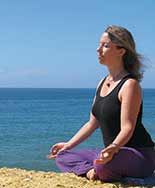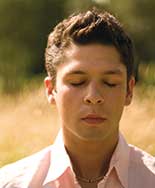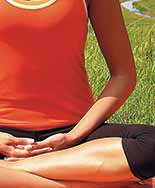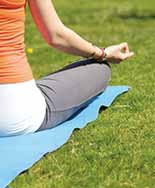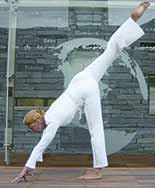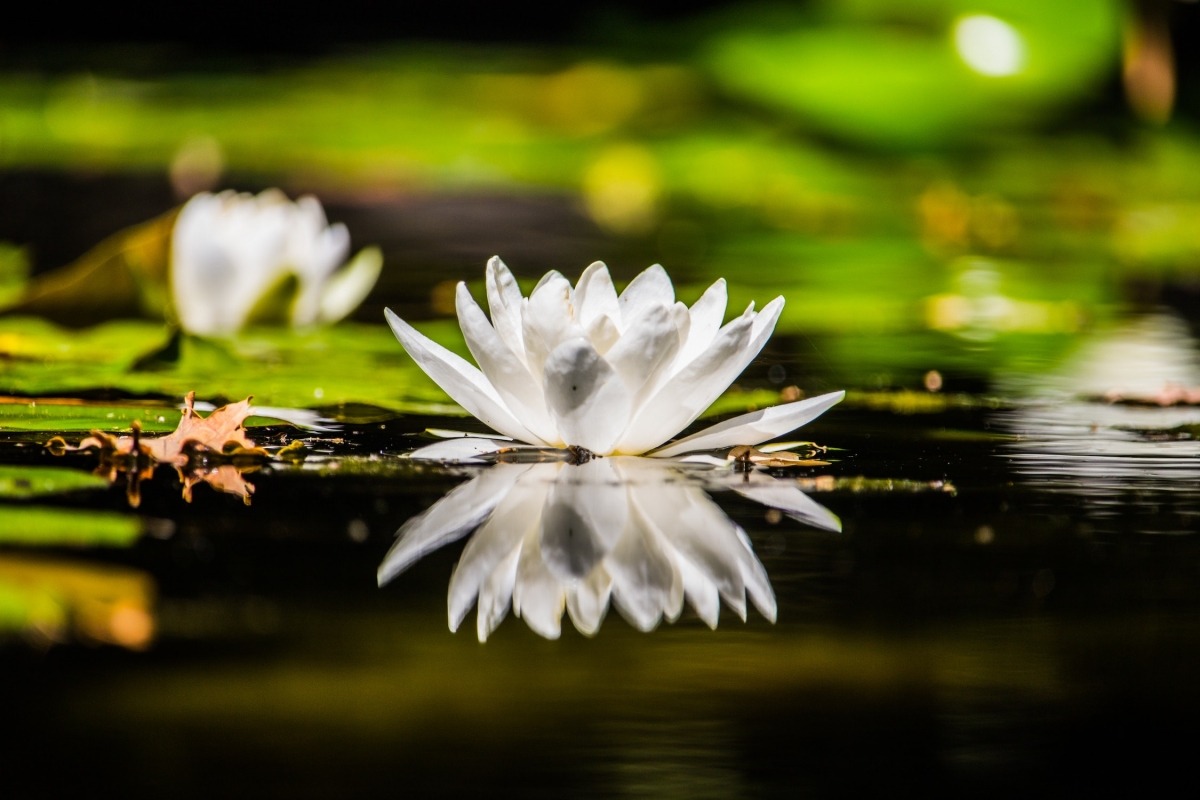
What? ...Contentment...even in the time of Covid 19...How could this be possible?...
This may well be your reaction, particularly if you have been experiencing any of the following...
- Feeling annoyed and irritable
- Feeling disappointed that your plans have had to go down the plug hole
- Feeling really uncertain about how this will all unfold
- Missing your dearly loved ones
- Desperate to get out and socialize with others
- Feeling pretty bored
- Feeling so angry because everything has changed
- Feeling anxious about your own health and that of other people
- Feeling really scared about a whole range of issues including work, lack of income, running out of essentials…
So how wonderful would it be to experience contentment in spite of all of the above?
You may not be surprised to know that yogis have been practising CONTENTMENT for hundreds if not thousands of years. What can we all learn from the yogic tradition which will be of practical help to all of us right now, in the middle of this pandemic?
Allow me to introduce you to Patanjali, he gave us his yoga sutras as the basis for developing our yogic paths many, many years ago (actually scholars cannot agree about when he lived!) He gave us the Yamas and the Niyamas as a guide to how to live our lives; the Yamas are restraints (a little bit like the Ten Commandments) and the Niyamas are observances. One of those observances is SANTOSHA, which we can translate as Contentment. The Patanjali sutra is from Chapter 2, 42 "The result of contentment is total happiness”
“In order to find contentment the most important prerequisite is to reduce the complexity of your life.” Points of Balance, Patel and Barrington.
It seems to me that this is a perfect time to practise contentment. For many of us, life has suddenly become much simpler, far less complex (not by choice) but it has been thrust upon us. Life has changed so much, so quickly, leaving us feeling rather unsettled, fearful, uncertain, stressed, to a greater or lesser extent.
Contentment has been defined as “The ability to be comfortable with what we have and what we do not have” (T. K. V. Desikachar) I feel very well qualified to tell you about this having lost the capacity to speak clearly, this was a major blow but one which I have had to adapt to so that now I feel comfortable communicating in different ways.
Essentially when things happen that are completely out of our control, there is one thing we CAN control... we can CHOOSE how to respond. So how can we reduce our reactivity? Well we can select yoga practices which bring us to a state of inner stillness.
Pranayama (breathing techniques) are a great place to start. When we consciously coordinate our movements and our breath we very soon we begin to calm down. A perfect example of this is the Dru Earth sequence, very grounding and calming, https://youtu.be/_4KHzOk2rIw
The deep yogic breath is a technique which you can practise any time, any place, anywhere:
...as you start to breathe in feel the abdomen expand slightly, then feel the rib cage expands and then the collar bones lift very slightly;
...as you breathe out the abdomen subsides, then the rib cage and finally the collar bones.
Work with this simple technique until you begin to feel calmer and more relaxed, it may only take a few breaths or it may take a little longer.
Relaxation? Oh YES! Deep relaxation brings us into a very still place, a place where we begin to touch that inner stillness. https://druyoga.com/yoga-online/video/relaxation-10-mins
And only then are we ready to meditate...
A Meditation on Contentment
Sit comfortably with an upright spine
Alternate nostril breath, for a few rounds (inhale through the left nostril with right nostril closed, exhale through the right nostril with left closed. Inhale through right, exhale through left. Use a breath count if you like.)
Take your awareness to the centre of your chest, to your heart
Visualise the abundance in your life in the space in front of your heart, extending out beyond the body
Acceptance is also crucial when things are totally beyond our control, we can be assured that ‘this too shall pass’ and rather like the weather ‘it is as it is’.
Breathe in gratitude for the abundance in your life into the heart, and breathe out into the space in front of your heart. Continue as long as feels right for you.
Now visualize the expanse of time in the space behind your heart, extending beyond the body
Breathe in gratitude for the present moment into your heart from this space, breathe out into the space behind you. Continue.
Now breathe into the heart from the space in front of you (gratitude for abundance) and breathing out into the space behind you (gratitude for the present moment). Continue.
Take your awareness to the eyebrow centre and use the alternate nostril breath again, without using your hands.
Breathe in peace and serenity through the left nostril. Breathe in strength and energy through the right nostril. Continue.
Finally bring your awareness back to the heart and sit in pure ‘contentment’ for as long as you wish!
Another very simple and hopefully familiar practise is that of gratitude. Instead of being overwhelmed by all that is happening.Simple but nonetheless powerful practices.
Perhaps the most important lesson we can learn from all of this is that peace and happiness lie within. We do not need to look outside of ourselves to find contentment; when we close our eyes and breathe and follow either the meditation above or a different one we will surely connect to our true Selves. The more often we practise coming within, the more powerfully we will experience our true essence and then we can sit in total contentment.
May all beings be at peace, May all beings know the true peace within their own hearts,
Om Shanti, Shanti, Shanti






